It looks like you're using an Ad Blocker.
Please white-list or disable AboveTopSecret.com in your ad-blocking tool.
Thank you.
Some features of ATS will be disabled while you continue to use an ad-blocker.
share:
Some of you already know I'm into Metal Detecting this year. So I started to combine it with magnet fishing too. Got a nice 350 Lbs. pull magnet and
now it is part of my metal detecting gear. Just love it. I didn't want to start a thread about it until today, my magnet trapped a few rocks between
other stuff, this one in particular called my attention. I'm not a rock expert, that's why I'm here this time. Any help?
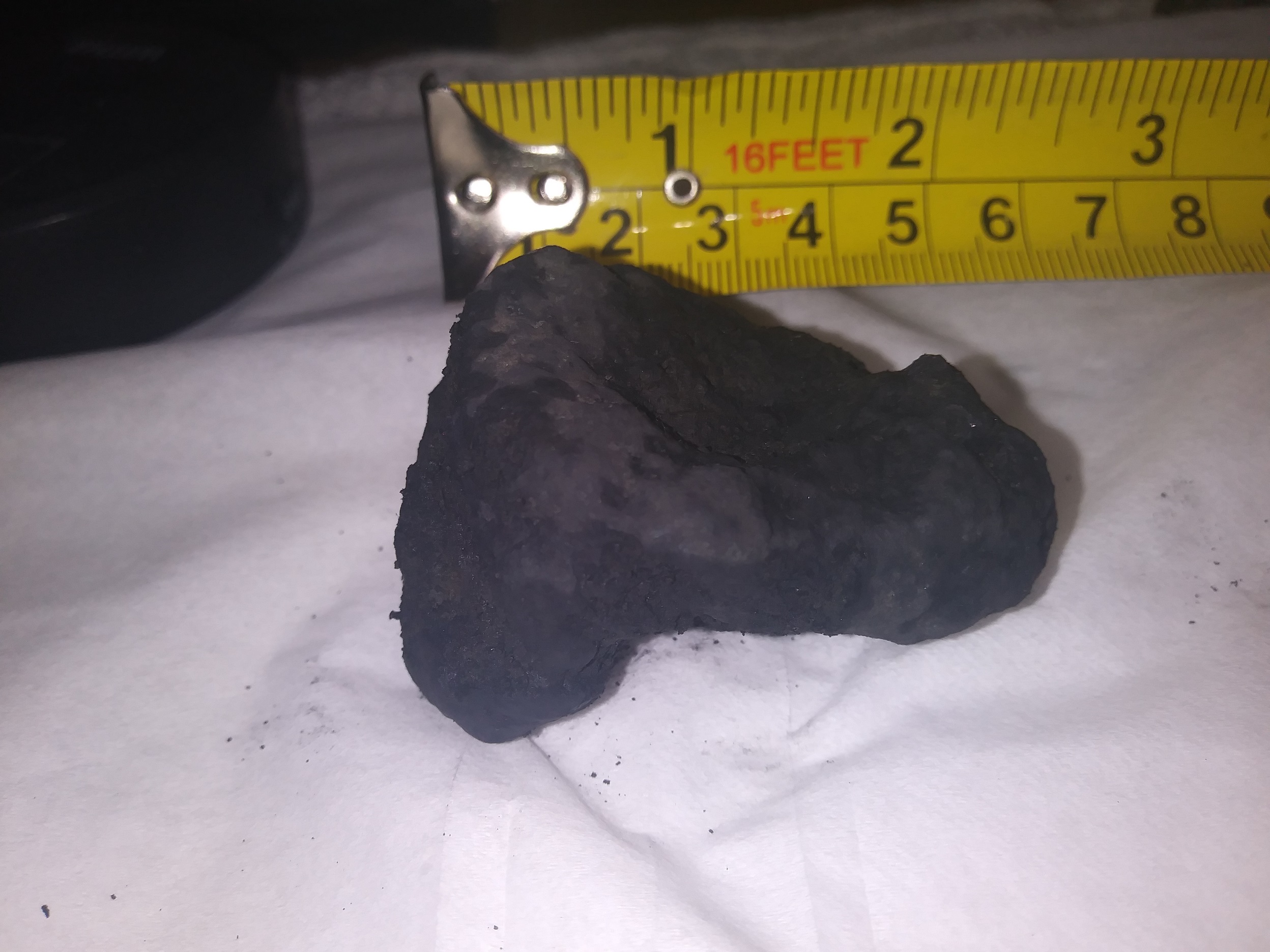
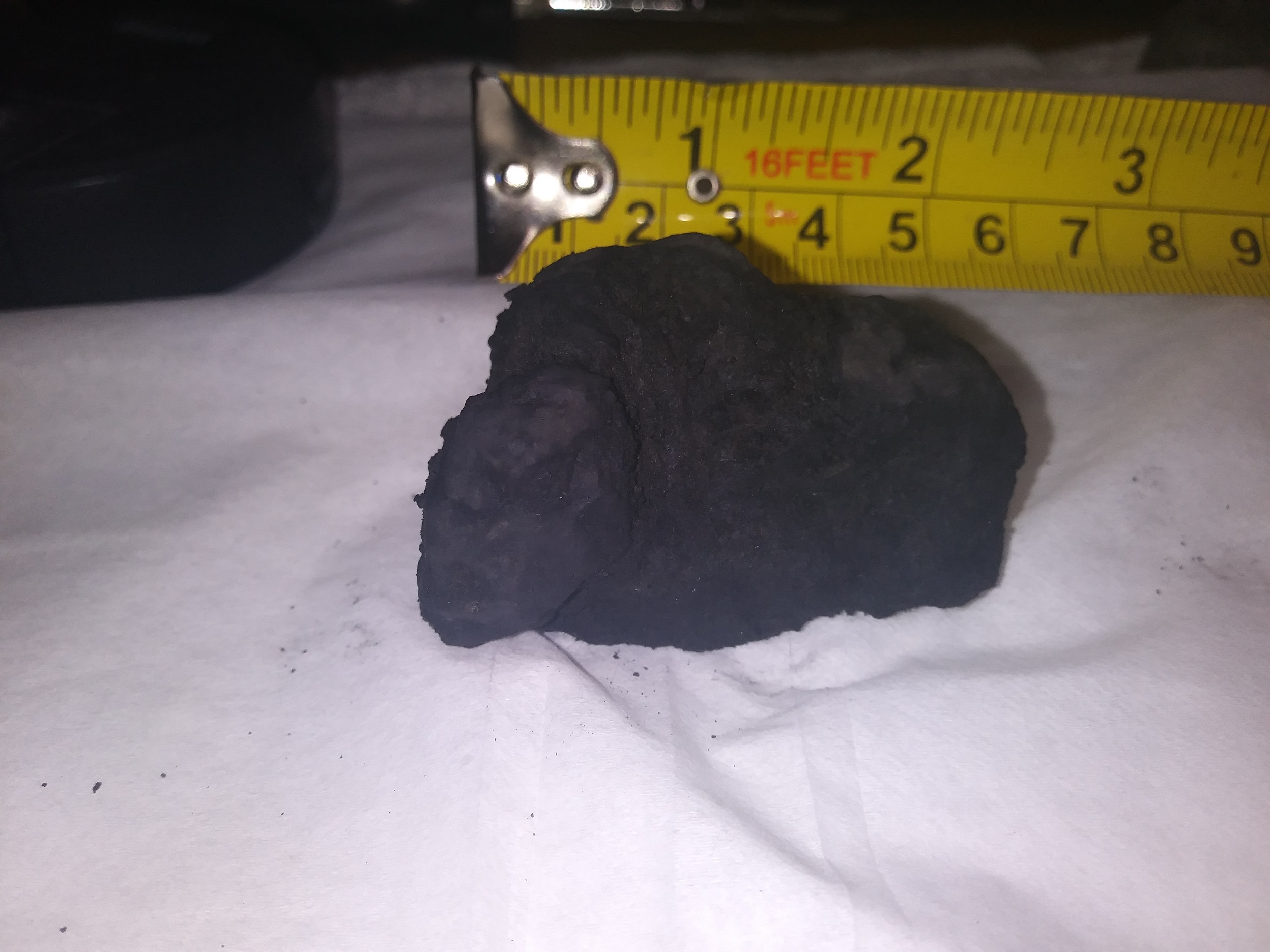
I didn't clean it well, it still have a layer of a sort of black mud from the lake I found it, as you can see.
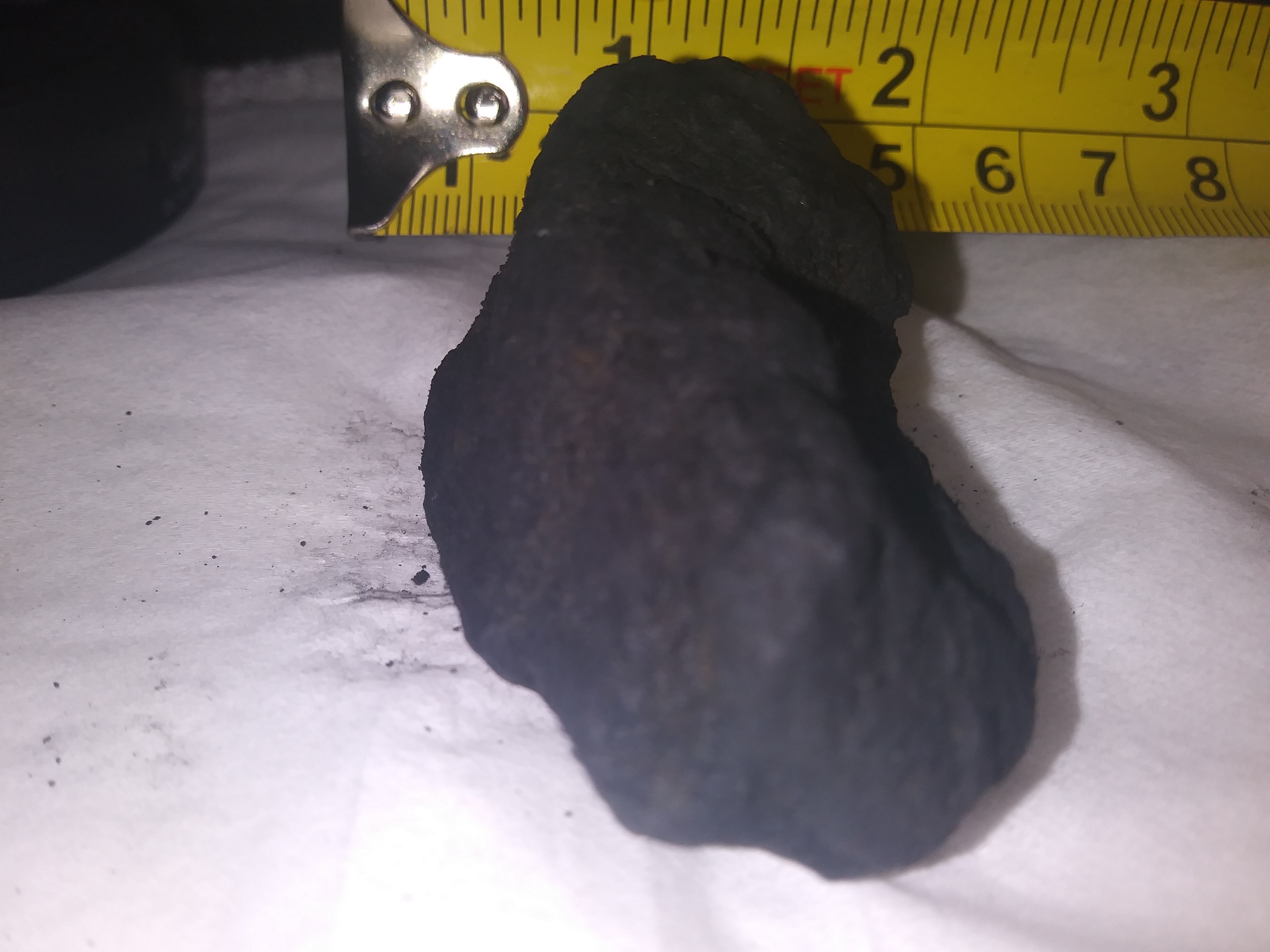
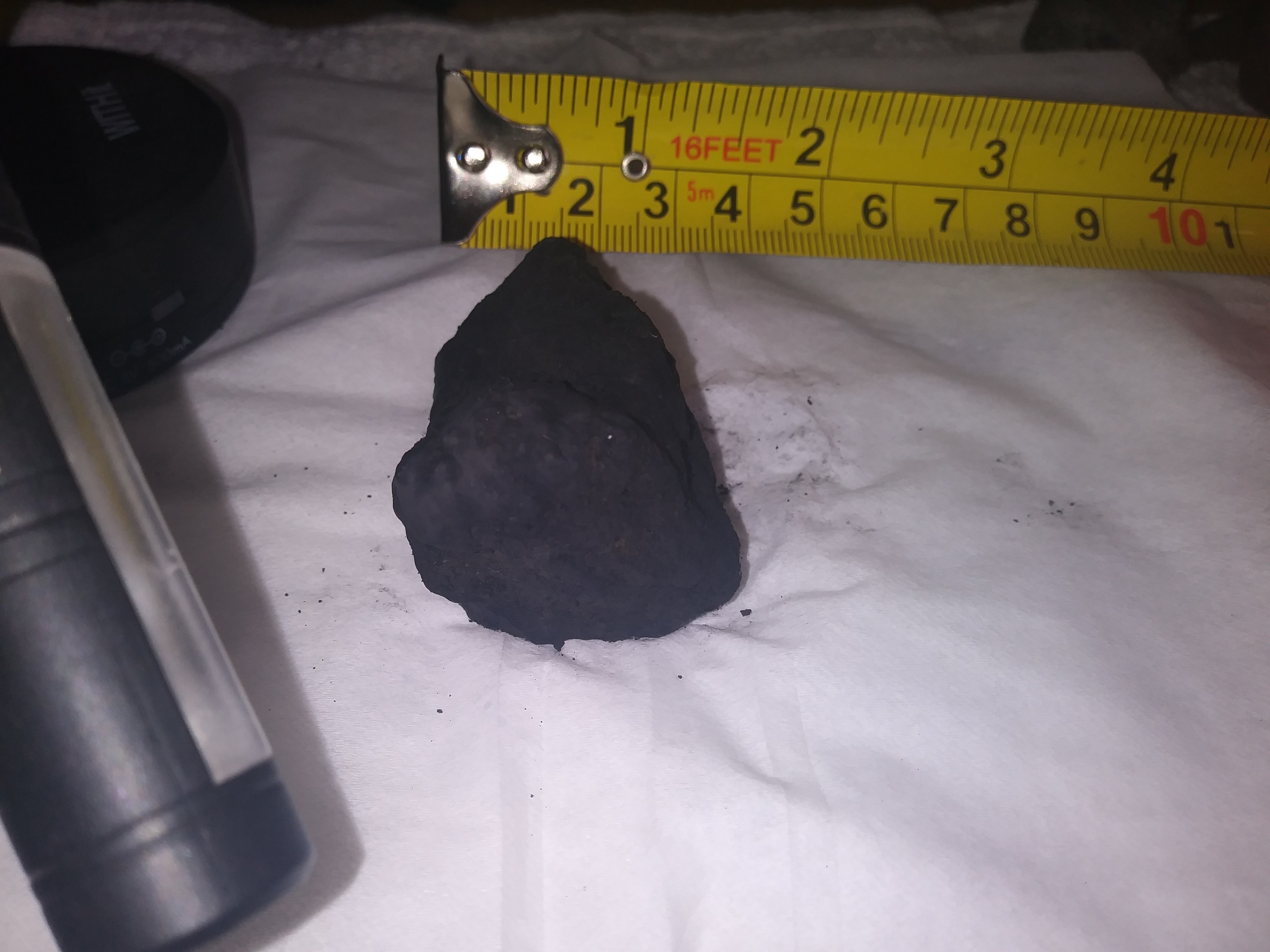
I tested it with a lot weaker magnet at home and it actually got attracted too. I think this second batch of photos are more detailed.

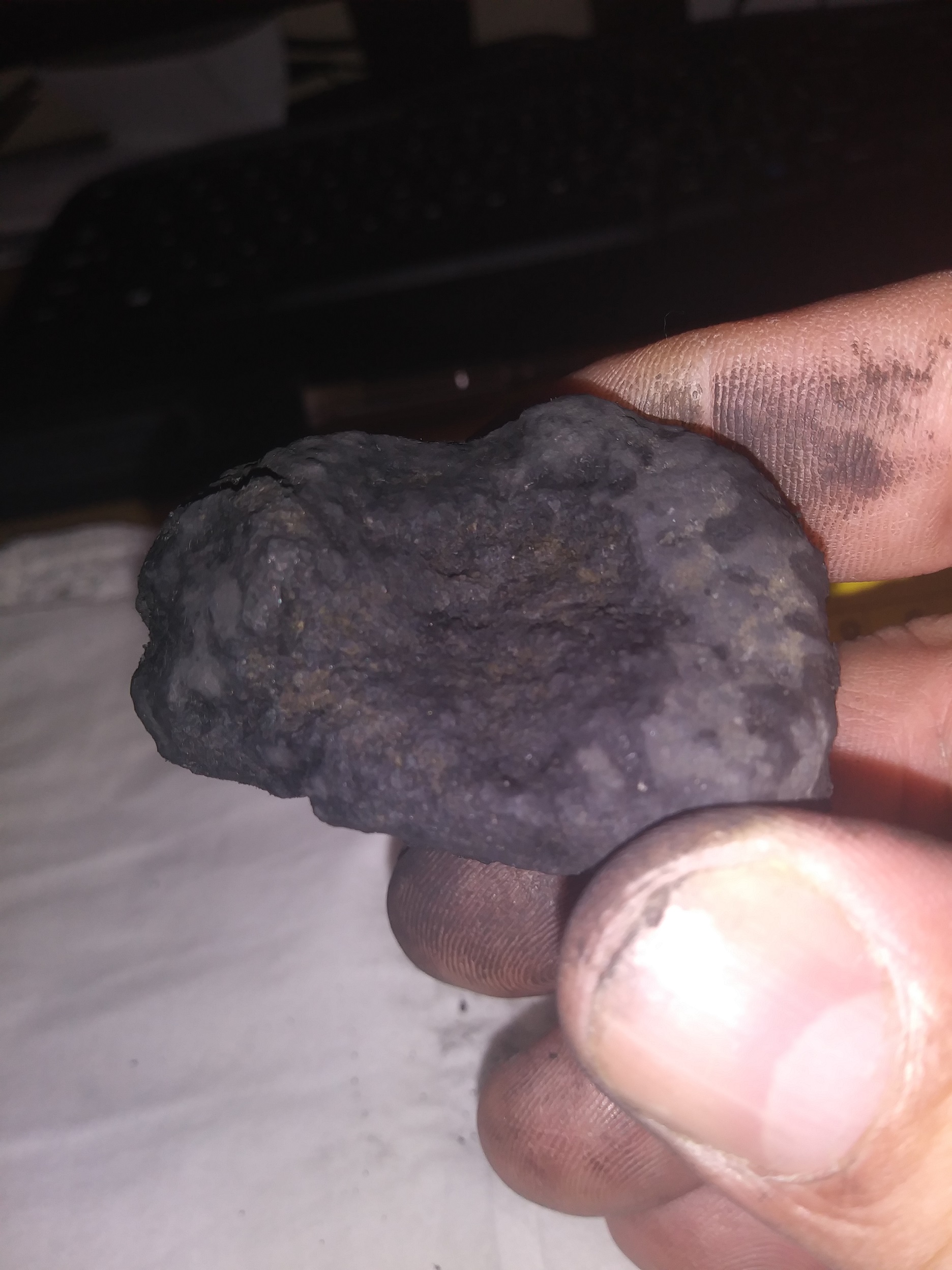

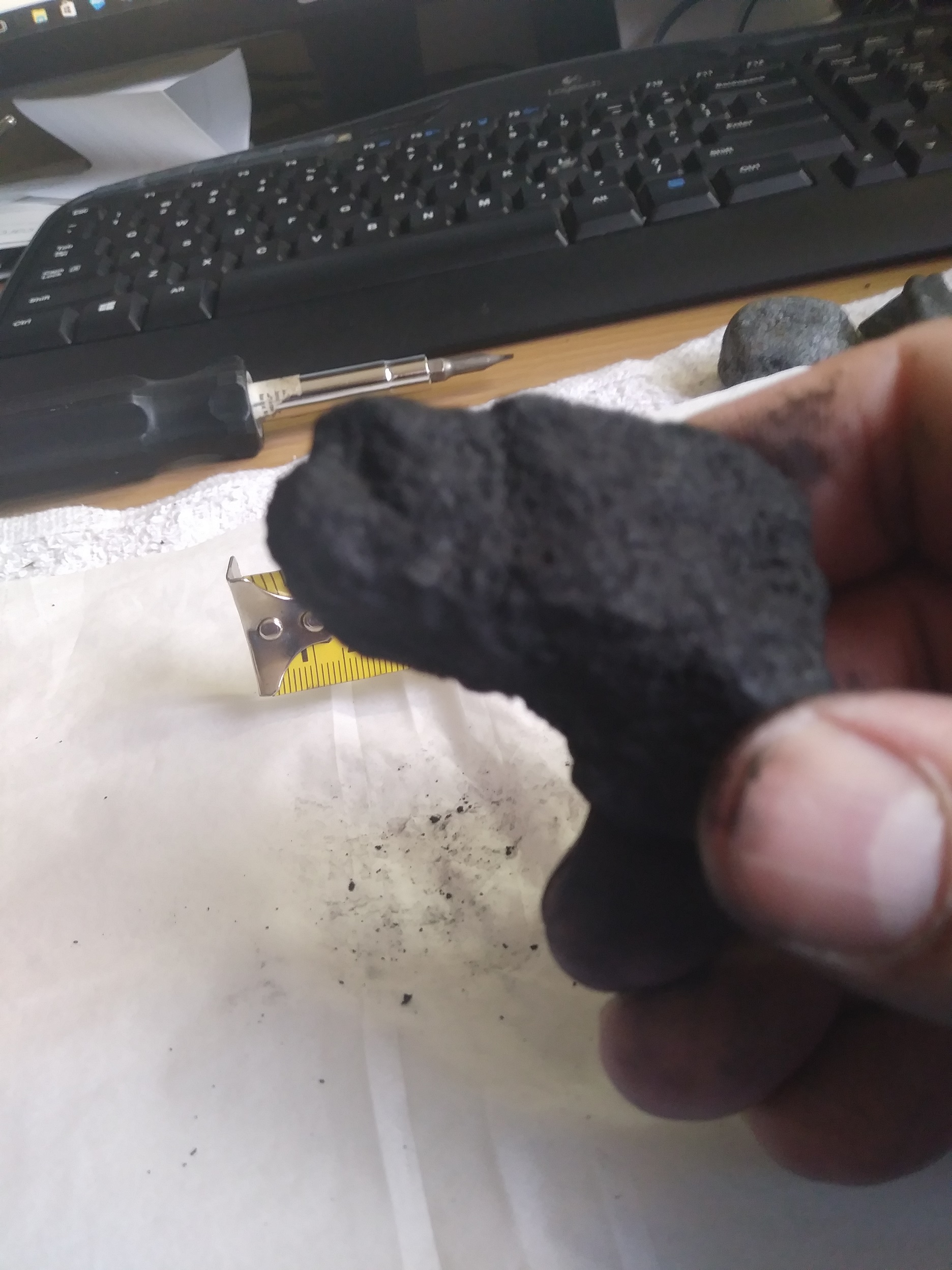
Also you can see it looks pretty heavy for its size. 71.8 grams.



I didn't clean it well, it still have a layer of a sort of black mud from the lake I found it, as you can see.


I tested it with a lot weaker magnet at home and it actually got attracted too. I think this second batch of photos are more detailed.




Also you can see it looks pretty heavy for its size. 71.8 grams.

edit on 23-7-2017 by Trueman because: (no reason given)
Looks like iron, to me. If you do a water displacement experiment you can determine it's density...
There's a ton of resources on determining of a find is a meteorite out not- consensus is almost always not, but I'm going to keep an eye on this thread...
I love magnets, but I'm not a fan of the fuzz.
There's a ton of resources on determining of a find is a meteorite out not- consensus is almost always not, but I'm going to keep an eye on this thread...
I love magnets, but I'm not a fan of the fuzz.
originally posted by: NarcolepticBuddha
originally posted by: Trueman
a reply to: lordcomac
Thanks for the clue. I don't know what is a water displacement experiment, I'll research it now.
Check your 4th grade Earth sciences textbook
Haha....I remember it now. It's been a long time . Man I'm really old.
edit on 23-7-2017 by Trueman because: (no reason given)
There is a great deal of magnetite and hematite in the beds of lakes and streams and this will attract a magnet fairly well since they are composed of
mostly iron oxides.
Finding an iron meteorite is a very rare occurrence, since less than 3% of meteorites that fall are irons. If a chondrite, they do not last in water, so finding a chondrite in water, especially with a black crust is rare as well, but certainly not impossible.
Grind a way a part of a corner and see what the material looks like. Just a little bit and use a lupe to check the material. If bright and shiny, some kind of metal, perhaps iron. If dull, look closely and see if there are any chondrules in the material as there are plenty of examples of chondrules in sliced meteorites on the web. If you see any small shiny metal flakes, this is promising as well.
With the cleaned up edge you have exposed, do a streak test on the bottom of a porcelain or ceramic plate (the rough area near the circle on the bottom. Quickly rub the material on the plate. If the streak comes out red or brown, it is hematite, or gray, it is most likely magnetite. Meteorites usually leave no streak at all, or a very, very light gray streak.
Best is to get it professionally tested with a gas chromatagraph, if it passes the above scrutiny. About $25 at
New England Meteoritical Services, but do not send the whole piece, just a tiny chip of it is all they need.
Finding an iron meteorite is a very rare occurrence, since less than 3% of meteorites that fall are irons. If a chondrite, they do not last in water, so finding a chondrite in water, especially with a black crust is rare as well, but certainly not impossible.
Grind a way a part of a corner and see what the material looks like. Just a little bit and use a lupe to check the material. If bright and shiny, some kind of metal, perhaps iron. If dull, look closely and see if there are any chondrules in the material as there are plenty of examples of chondrules in sliced meteorites on the web. If you see any small shiny metal flakes, this is promising as well.
With the cleaned up edge you have exposed, do a streak test on the bottom of a porcelain or ceramic plate (the rough area near the circle on the bottom. Quickly rub the material on the plate. If the streak comes out red or brown, it is hematite, or gray, it is most likely magnetite. Meteorites usually leave no streak at all, or a very, very light gray streak.
Best is to get it professionally tested with a gas chromatagraph, if it passes the above scrutiny. About $25 at
New England Meteoritical Services, but do not send the whole piece, just a tiny chip of it is all they need.
edit on 23-7-2017 by charlyv because: spelling , where caught
a reply to: charlyv
Ok, I cut a little piece. The surface revealed has a gray metallic color, noticed some little shiny dots with the lamp. The ceramic got mostly scratched with lines of the same color of the rock.
Ok, I cut a little piece. The surface revealed has a gray metallic color, noticed some little shiny dots with the lamp. The ceramic got mostly scratched with lines of the same color of the rock.
edit on 23-7-2017 by Trueman because: (no reason given)
originally posted by: LightSpeedDriver
a reply to: Trueman
Please excuse the possibly noob question but why did you not clean it? Your hands and the object in question appear caked in dirt not of the object itself. I am not a metereolgerist. I mean the other thing.
I gently cleaned it just a bit with water, but didn't want to affect the nature of the object until I read some opinions. I guess it's a detectorist thing, that's what we usually do with coins. I gotta get a brush now.
originally posted by: Trueman
a reply to: charlyv
Ok, I cut a little piece. The surface revealed has a gray metallic color, noticed some little shiny dots with the lamp. The ceramic got mostly scratched with lines of the same color of the rock.
If the streaks are very light, with what you say, then get it tested.
An unclassified authentic meteorite is worth some bucks, so it would be worth your time and piece of mind as well.
Further research in the area it was found, where meteorites have been found, (a strewn field) might help you as well. Strewn fields are freely available for use with Google Maps, in the form of KML files, but you have to put on your tin foil hat and dig for this kind of data. Good Luck!
originally posted by: MarkOfTheV
a reply to: Trueman
Cool find and interesting hobby... Questions for you...
What depth are you fishing at?
How big is a magnet with a 350lb pull?
Is that on a rope or umbilical of some sort?
Lakes? Rivers? Ponds? .... oceans????

That's my baby. Found it in Amazon.
www.amazon.com...=oh_aui_detailpage_o05_s00?ie=UTF8&psc=1
I bought the rope in Harbor Freight, I don't remember the price but it's very cheap and strong. I don't know how deep is the lake/pond where I found the rock, maybe 3 or 4 feet deep.
originally posted by: charlyv
originally posted by: Trueman
a reply to: charlyv
Ok, I cut a little piece. The surface revealed has a gray metallic color, noticed some little shiny dots with the lamp. The ceramic got mostly scratched with lines of the same color of the rock.
If the streaks are very light, with what you say, then get it tested.
An unclassified authentic meteorite is worth some bucks, so it would be worth your time and piece of mind as well.
Further research in the area it was found, where meteorites have been found, (a strewn field) might help you as well. Strewn fields are freely available for use with Google Maps, in the form of KML files, but you have to put on your tin foil hat and dig for this kind of data. Good Luck!
Thank you Charly, I think it's time to brush it well.
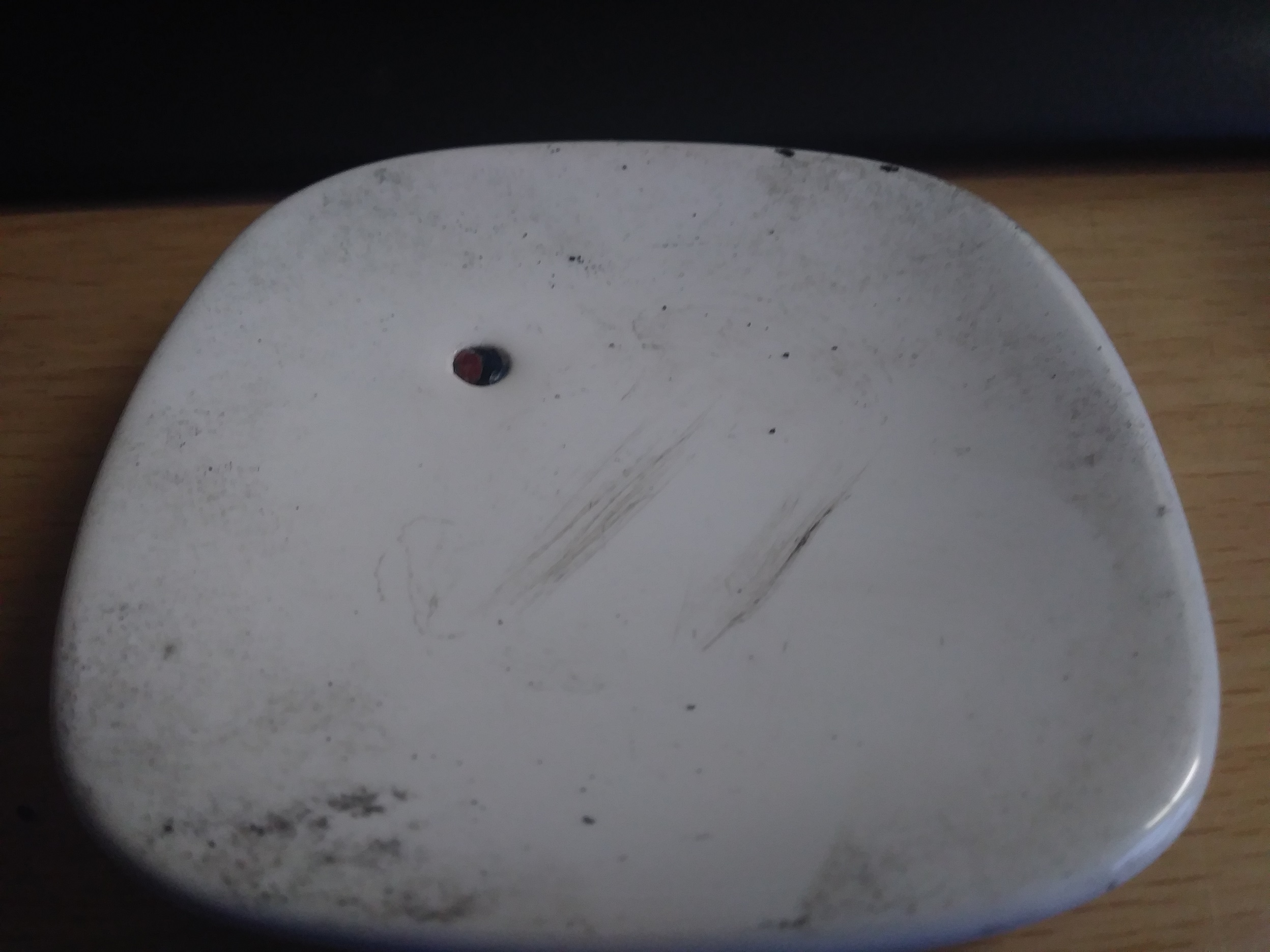
originally posted by: Trueman
originally posted by: charlyv
originally posted by: Trueman
a reply to: charlyv
Ok, I cut a little piece. The surface revealed has a gray metallic color, noticed some little shiny dots with the lamp. The ceramic got mostly scratched with lines of the same color of the rock.
If the streaks are very light, with what you say, then get it tested.
An unclassified authentic meteorite is worth some bucks, so it would be worth your time and piece of mind as well.
Further research in the area it was found, where meteorites have been found, (a strewn field) might help you as well. Strewn fields are freely available for use with Google Maps, in the form of KML files, but you have to put on your tin foil hat and dig for this kind of data. Good Luck!
Thank you Charly, I think it's time to brush it well.
I would not do that at this juncture. If there is any fusion crust, it will devalue the material. You could look at the dark crust and see if there are flow lines in it. These are irregular lines that flow in parallel directions. Some have regmalypts, which are like small thumbprints over the surface, but do not have to be there, but certainly a big plus.
originally posted by: Blaine91555
a reply to: Trueman
Does it exhibit any magnetic properties itself? Does it attract iron filings?
Looks like it may be Magnetite, but testing it as you are should help figure it out.
Well, this is what I got after the porcelain test and then washed with a toothbrush.
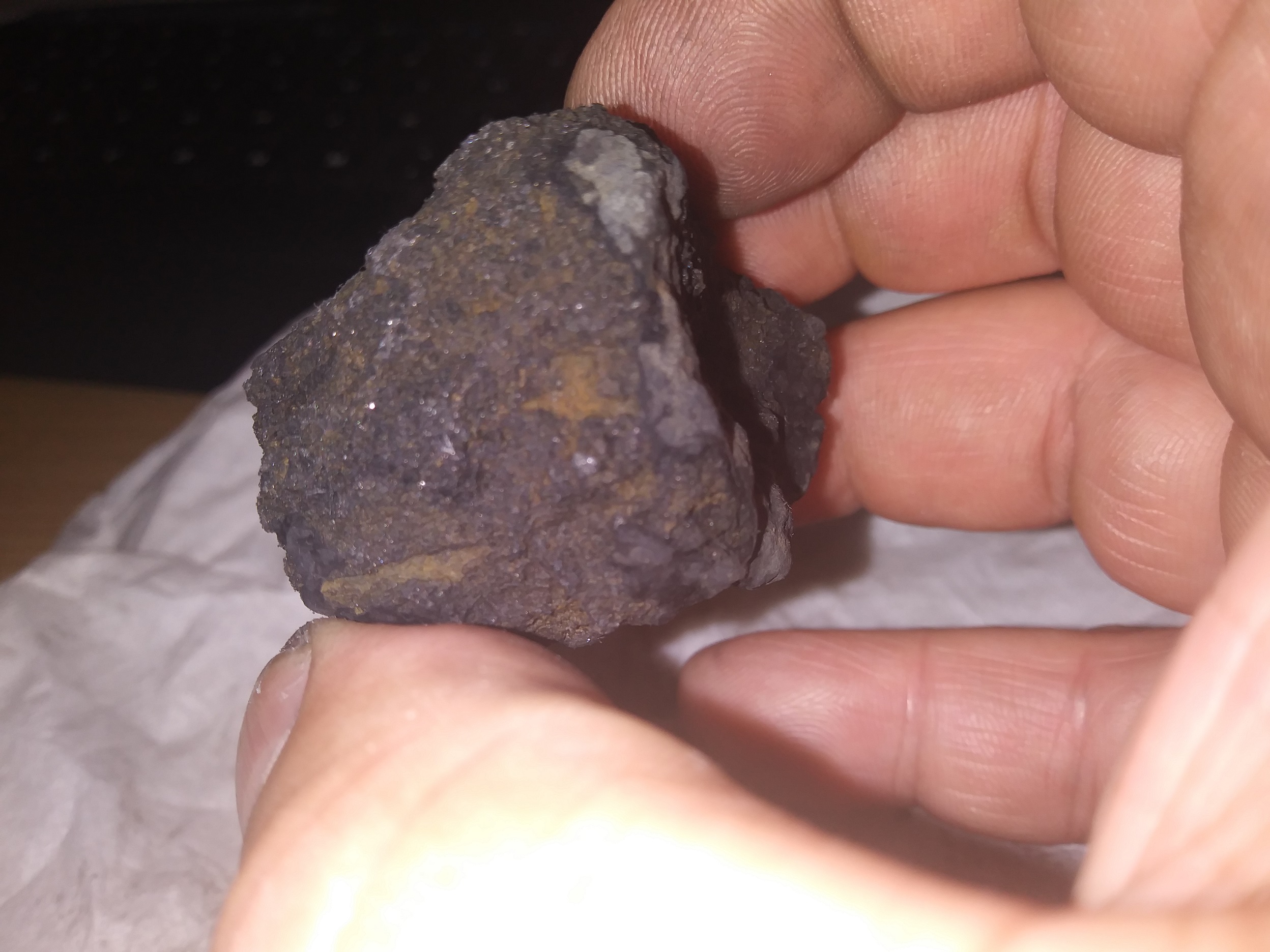
What you think?
a reply to: Trueman
Oh well, but it still looks interesting. Do the streak test again on the area with no crust, just for grins.
Really light gray streaks or none at all are what you want to see. It is more of a hardness test as the matrix will be a pyroxene, which has hardly any streak at all.
Oh well, but it still looks interesting. Do the streak test again on the area with no crust, just for grins.
Really light gray streaks or none at all are what you want to see. It is more of a hardness test as the matrix will be a pyroxene, which has hardly any streak at all.
edit on 23-7-2017 by charlyv because: spelling , where caught
a reply to: Trueman
It's impossible to tell from a photo. It looks very much like Magnetite, but that does not mean it is. It is more likely than it being a Meteorite.
LINK
It's impossible to tell from a photo. It looks very much like Magnetite, but that does not mean it is. It is more likely than it being a Meteorite.
LINK
Identification of Magnetite
Magnetite is very easy to identify. It is one of just a few minerals that are attracted to a common magnet. It is a black, opaque, submetallic to metallic mineral with a Mohs hardness between 5 and 6.5. It is often found in the form of isometric crystals. It is the most strongly magnetic mineral found in nature.
lodestone magnetite
Lodestone: A specimen of lodestone that has attracted numerous tiny particles of iron. This specimen is approximately 10 centimeters across.
octahedral magnetite crystals
Magnetite Crystals: Octahedral crystals are a common habit of magnetite. They are often seen in igneous and metamorphic rocks and sometimes seen in sediments near the magnetite source area. The magnetite crystals in this photo are about eight to twelve millimeters in maximum dimension.
Magnetite as "Lodestone"
Normal magnetite is attracted to a magnet, but some specimens are automagnetized and have the ability to attract small pieces of iron, small pieces of magnetite, and other magnetic objects. This form of magnetite, known as "lodestone," was man's first encounter with the property of magnetism. Lodestone is easily identified because it is usually covered with small particles of magnetite and other magnetic minerals (see photo).
Pieces of lodestone suspended on a string served as the first magnetic compasses and were used in China as early as 300 BC. When freely suspended on a string, a small piece of lodestone will align itself with Earth's magnetic field.
new topics
-
Gaetz withdraws from attorney general consideration
US Political Madness: 54 minutes ago -
Bridgewater Triangle
General Chit Chat: 56 minutes ago -
Is Russia Using a New Type of Beam Weapon Against Ukraine?
Weaponry: 2 hours ago -
Here is why Western leaders in NATO have zero fear of nuclear warfare. At all. Zero.
World War Three: 3 hours ago -
International Criminal Court Issues Arrest Warrant For Netanyahu
Breaking Alternative News: 4 hours ago -
racist rant, but she made the arguement to get rid of DEI
US Political Madness: 5 hours ago -
Well we know Putins ICBMs won't fail in their silos
World War Three: 6 hours ago
top topics
-
FEMA Head Admits Agency Skipped 20 Homes with Trump Signs
Mainstream News: 16 hours ago, 19 flags -
Yet another Hack...
Rant: 17 hours ago, 14 flags -
Well we know Putins ICBMs won't fail in their silos
World War Three: 6 hours ago, 12 flags -
racist rant, but she made the arguement to get rid of DEI
US Political Madness: 5 hours ago, 9 flags -
International Criminal Court Issues Arrest Warrant For Netanyahu
Breaking Alternative News: 4 hours ago, 8 flags -
Is Russia Using a New Type of Beam Weapon Against Ukraine?
Weaponry: 2 hours ago, 6 flags -
Why isn't Psychiatry involved?
Social Issues and Civil Unrest: 12 hours ago, 4 flags -
Here is why Western leaders in NATO have zero fear of nuclear warfare. At all. Zero.
World War Three: 3 hours ago, 4 flags -
Help in song interpretation
Music: 14 hours ago, 3 flags -
Bridgewater Triangle
General Chit Chat: 56 minutes ago, 2 flags
active topics
-
Gaetz withdraws from attorney general consideration
US Political Madness • 3 • : CriticalStinker -
Russia Ukraine Update Thread - part 3
World War Three • 6846 • : Freeborn -
-@TH3WH17ERABB17- -Q- ---TIME TO SHOW THE WORLD--- -Part- --44--
Dissecting Disinformation • 3336 • : Thoughtful3 -
Is Russia Using a New Type of Beam Weapon Against Ukraine?
Weaponry • 6 • : BeyondKnowledge3 -
International Criminal Court Issues Arrest Warrant For Netanyahu
Breaking Alternative News • 28 • : CriticalStinker -
How can you defend yourself when the police will not tell you what you did?
Posse Comitatus • 98 • : Freeborn -
Well we know Putins ICBMs won't fail in their silos
World War Three • 78 • : andy06shake -
Help in song interpretation
Music • 9 • : FullHeathen -
President-elect TRUMP Picks MATT GAETZ for his ATTORNEY GENERAL - High Level PANIC Ensues.
2024 Elections • 117 • : network dude -
racist rant, but she made the arguement to get rid of DEI
US Political Madness • 7 • : KnowItAllKnowNothin
